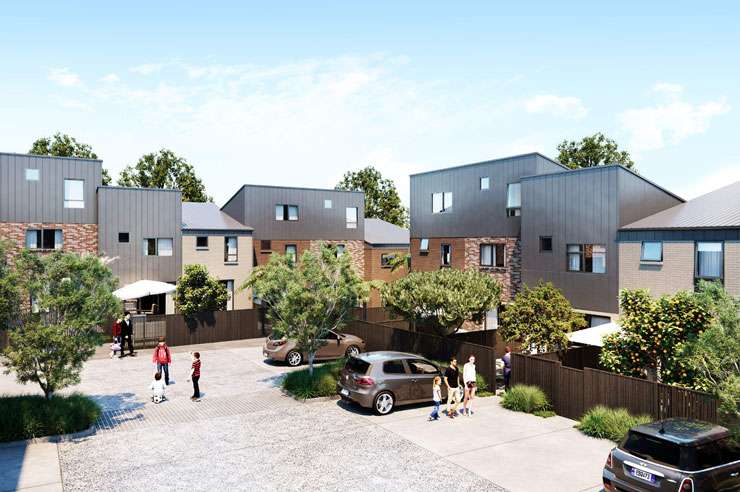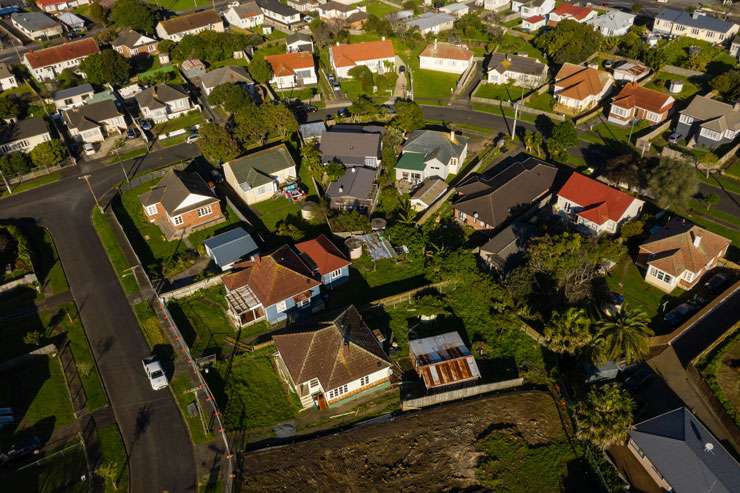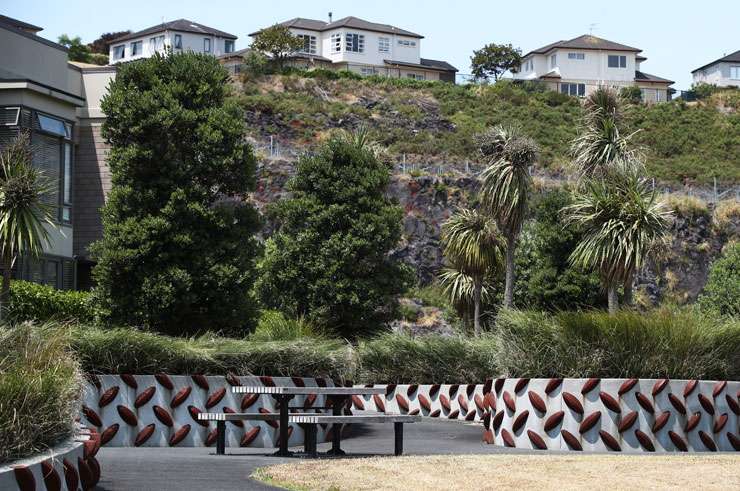Mammoth building projects in the works by government housing organisation Kāinga Ora are being felt in neighbouring suburbs.
Affordable houses in the central Auckland suburbs of Mount Roskill and Oranga and North Shore’s Northcote are selling for the mandated $500,000 to $600,000, but in surrounding streets prices for existing houses, or new builds by private developers, are expected to run higher.
“In the open market, there will be bigger and better houses in the $700,000 even to $1 million range,” says Pete Evans, national director of residential property development and project marketing Colliers. His company is marketing tranches of affordable homes in Northcote and around Manukau.
“While there are some controls so that developers can’t just go build a big house on a big block for $1.5 million, private people are encouraged to do upgrades to look consistent with the new developments. New home-owners are more attracted to these places than they would have been in the past.”
Start your property search
Mark Fraser, acting deputy chief executive, urban development delivery at Kāinga Ora, says: “These places are already quite awesome, well located with good natural features.
“The things we can improve, the open spaces and connections, that is enough to start the next era for that suburb. It helps existing neighbourhoods become better versions of themselves.”
Large-scale transformations
Regeneration projects in Mount Roskill, Oranga, and Northcote, as well as other parts of Auckland, are replacing cold and mouldy state houses from the 1950s and 60s with new, high-quality, healthy homes in a mix of state and affordable homes and ones sold on the open market. Over the next 10 to 15 years, that brings 10,000 homes in the Roskill Development and another 1,000 new homes in neighbouring Oranga. The first of the planned 1500 homes in Northcote were launched a year ago.
Evans says the large scale of Kāinga Ora programmes is transforming the surrounding communities.

New developments like Kotuitui in Manukau are adding warm, well-designed housing in previously wasted land. Photo / Supplied
“They take an area and they increase the density by three times, they create a new amenity for social housing and home buyers. It’s always a desirable location to start with, with locations near the city and good local amenity, because they were established 50 years ago.
“It brings a new mix of social housing, first home buyers and open market buyers into an existing community and they are-engaging.”
He adds: “Some people who like older houses will be prepared to put $100,000 into upgrading, or even bulldoze to put in a new house. As the area keeps transforming it encourages people to feel confident to do this.”
That’s exactly what Fraser wants to hear.
“Already we’re seeing development happening in Roskill that is not us - good sites being developed with good density," he says.
“We’re on the edge of very desirable suburbs, with good transport connections, so almost the next streets over, they’re doing four or five storey housing forms that Auckland needs more of. We will influence that next development.
“It’s not an exact flow, it does depend on what sites [developers] can secure.”
Making a difference
Fraser says that Kāinga Ora does not have to make big changes to the places themselves as they move through building good homes.
“They’re already quite awesome, well located with good natural features. But the houses reflect the time that they were built, and the things we can improve, like open spaces and connections, are enough to start the next era for the suburb,” he says.
Mat Peters of developers Avant Group, which is building house for Kāinga Ora in Roskill and Manukau, says that the scale of the developments is what makes the difference.

The Auckland suburb of Oranga, where approximately 1,000 new homes will be built over eight years. Photo / Supplied
“They are so large, so positive for everyone. They’re sparking a new interest and confidence in an area that has been held back by poor housing.”
In Mount Roskill, vendors are thinking of listing to make the most of price improvements brought by the regeneration, says Ray White agent Kanav Patpatia, who has lived in the area for 12 years.
However, there is hesitation among some buyers. “It’s still a pretty ideal location, but buyers are hesitant to take action because they’re uncertain who is going to move in. Will it get crammed up with parking because it is pretty dense?”
In Glenfield, which abuts Northcote, Harcourts agent David Ding says that buyers are still hesitant to buy close to the new development, but expects interest to rise in a year or two once building works are complete.
“I’ve got vendors holding off listing, saying that they would get more money when it is finished. Then the market will catch up,” he says.
The Stonefields effect
Developers have learned from watching the effect of Stonefields, in Mount Wellington, that blending the new with the old is more likely to push up an entire area. Homeowners in Stonefields have pocketed an average $100,000 more per resale than surrounding established suburbs over the past decade, with the average resale profit close to $500,000.
Colliers’ Evans said Stonefields homes grew in value because they offered buyers low-maintenance homes with a modern design, that weren't a hike to the city fringes.

Stonefields has delivered healthy profits to home owners who have resold their houses over the last decade. Photo / Getty Images
"The advantage Stonefields had was it adjoins other suburbs of high demand but was offering something different," he said.
Avant’s Peters points out that it’s not just the housing, but the under-pinning infrastructure set up Kāinga Ora and its joint venture partners – waste and water, roads and more – that is essential to adding to the housing supply.
“This is the key that had been missing. The land is ready to be built on, they’re enabling works to be built at scale. It gives other builder/developers impetus when they can see the change.”
- This content was created in partnership with Kāinga Ora








